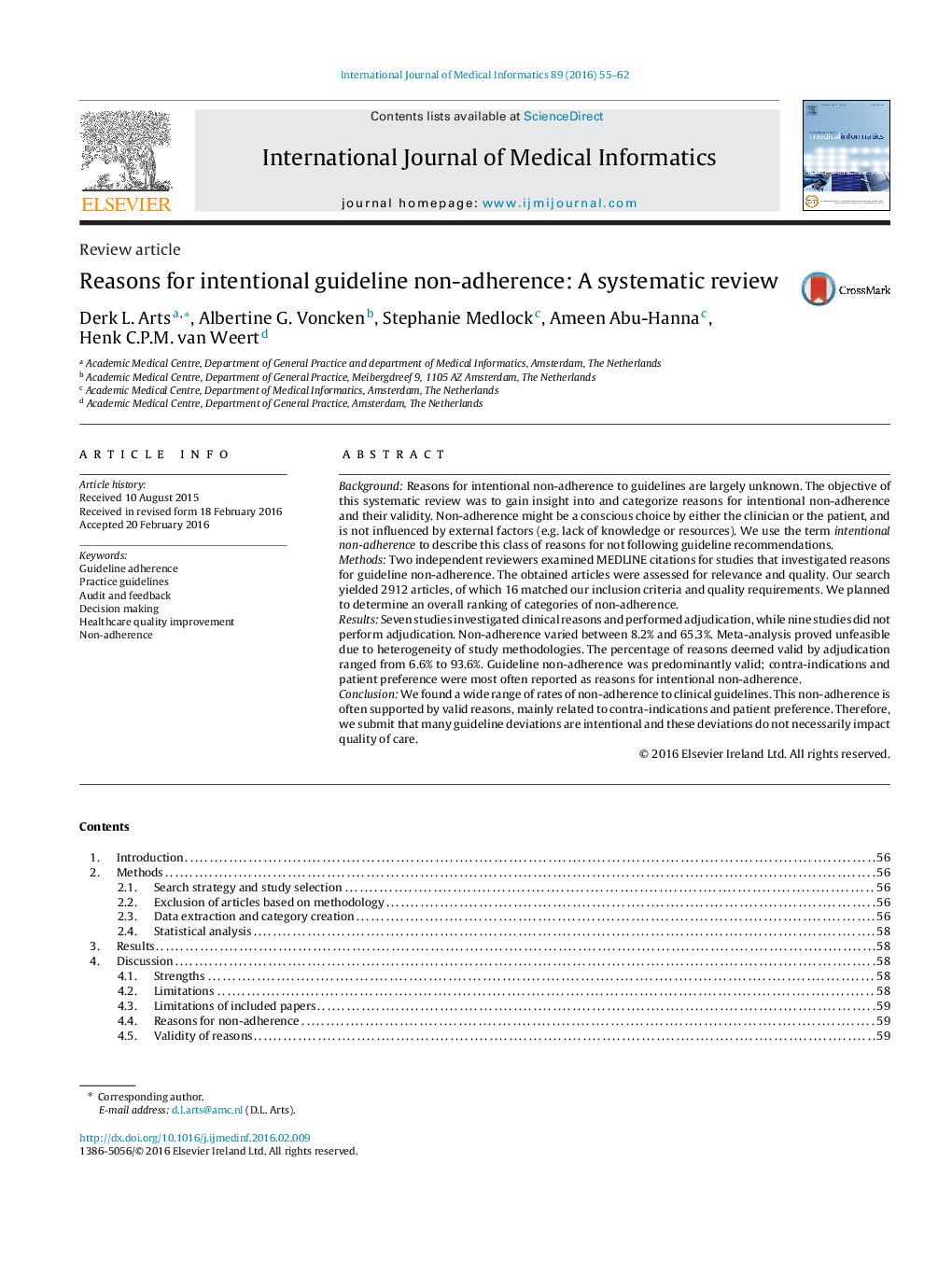| Article ID | Journal | Published Year | Pages | File Type |
|---|---|---|---|---|
| 516420 | International Journal of Medical Informatics | 2016 | 8 Pages |
•Guideline non-adherence remains substantial despite the interventions that have been implemented to reduce it.•In this review, we categorized and quantified reasons for intentional non-adherence and reported on their appropriateness (as defined by peers).•To our knowledge, this is the first review that assesses reasons for intentional guideline non-adherence.•We submit that many guideline deviations are intentional and justifiable, and these deviations do not necessarily impact quality of care.•We found reporting on guideline non-adherence to be very heterogeneous, and steps should be taken to standardize reporting of guideline non-adherence.•Our results contribute to future guideline development and aid in assessing the validity of modern-day quality indicators.
BackgroundReasons for intentional non-adherence to guidelines are largely unknown. The objective of this systematic review was to gain insight into and categorize reasons for intentional non-adherence and their validity. Non-adherence might be a conscious choice by either the clinician or the patient, and is not influenced by external factors (e.g. lack of knowledge or resources). We use the term intentional non-adherence to describe this class of reasons for not following guideline recommendations.MethodsTwo independent reviewers examined MEDLINE citations for studies that investigated reasons for guideline non-adherence. The obtained articles were assessed for relevance and quality. Our search yielded 2912 articles, of which 16 matched our inclusion criteria and quality requirements. We planned to determine an overall ranking of categories of non-adherence.ResultsSeven studies investigated clinical reasons and performed adjudication, while nine studies did not perform adjudication. Non-adherence varied between 8.2% and 65.3%. Meta-analysis proved unfeasible due to heterogeneity of study methodologies. The percentage of reasons deemed valid by adjudication ranged from 6.6% to 93.6%. Guideline non-adherence was predominantly valid; contra-indications and patient preference were most often reported as reasons for intentional non-adherence.ConclusionWe found a wide range of rates of non-adherence to clinical guidelines. This non-adherence is often supported by valid reasons, mainly related to contra-indications and patient preference. Therefore, we submit that many guideline deviations are intentional and these deviations do not necessarily impact quality of care.
